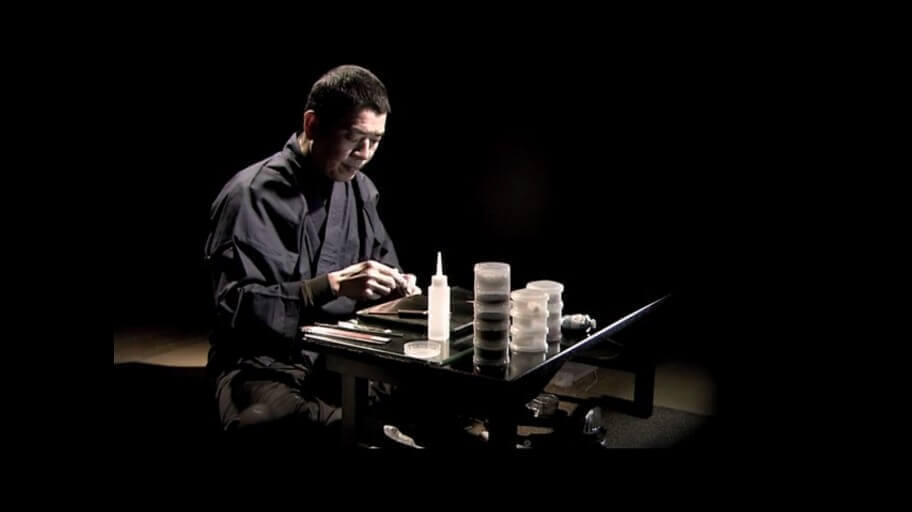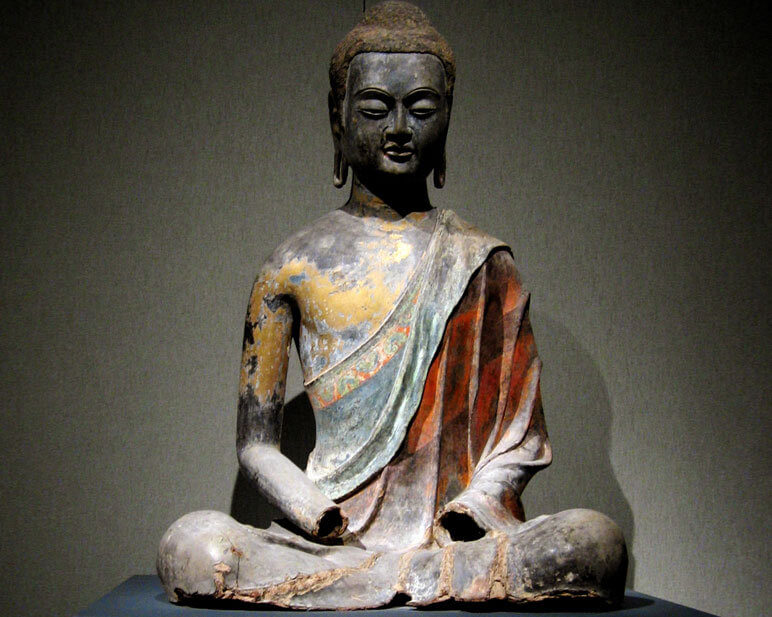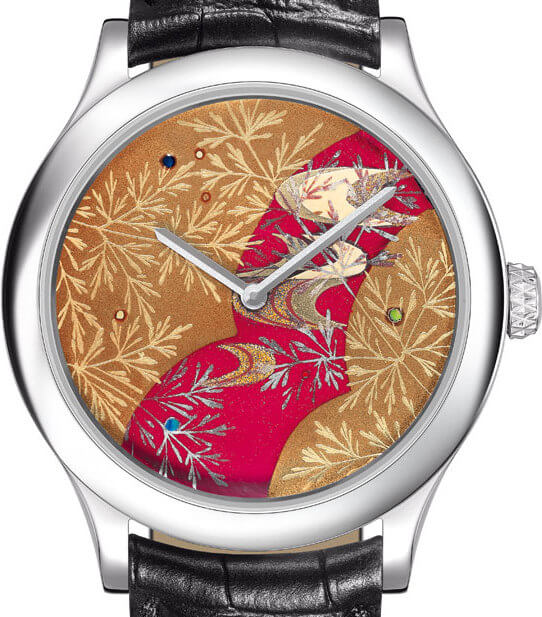Lacquer comes from the lacquer tree or Rhus verniciflua, native to southern China, South Korea, Vietnam and Japan. Its sap, which has a consistency similar to latex, is tapped by making a number of horizontal slashes in the trunks of trees which are at least ten years old. This is repeated several times a year, although the best quality of lacquer is harvested between June and August. The sap is filtered to remove impurities then refined. It is then stored in wooden barrels in drying chambers to eliminate water through evaporation.
Lacquer has unusual chemical properties. For example, it dries only in humid environments, hence south-east Asian climates are especially suited to the techniques that developed there around lacquer. Pure lacquer will only dry if applied in very thin layers, each of which must be sanded and polished when dry. Thus multiple layers must be applied, up to a hundred on certain pieces, to achieve the desired effect. The result is breathtaking. Once hardened, lacquer seals porous materials such as wood, bamboo or paper which become impermeable to humidity, salt, heat, liquids, even acids, hence its use for all types of kitchen utensil.
La symbolique des Laques

Gold dust
Lacquer techniques vary according to the country, the quality of the lacquer, and the intended use of the finished object. The three most representative categories of lacquer work are carving on multiple layers of lacquer, often in different colours to give a shimmering edge; inlay to create a raised impression as the different layers are applied; and maki-e. In this last technique, gold or silver powder is sprinkled over lacquer, usually black, while it is still wet to create the desired pattern or motif. Each layer is allowed to dry, then burnished with charcoal, repeating the process over and over. Maki-e is an ancient technique: the first known example dates from the Tenpyô era (710-784) when it was used to decorate a sword sheath. Particles of dust of different sizes form designs of horses and birds, in a way not unlike the Pointillism technique of nineteenth-century western art.











